|
A recent graduate from the Marine Conservation Lab, Hannah Rempel, was awarded the best 15-minute talk at the Western Society of Naturalists 2020 conference. She presented part of her master's research on 'Ecological drivers of parrotfish corallivory across multiple spatial scales in the Caribbean'. Congratulations, Hannah! You can watch her talk below:
0 Comments
Both graduate and undergraduate students from our lab had a great time presenting research virtually at the 101st meeting of the Western Society of Naturalists conference!
Age and growth of Pismo clam populations:
Coprophagy by tropical herbivorous fishes:
Ecological drivers of parrotfish predation on coral communities:
Parrotfishes and surgeonfishes are important herbivores on Caribbean reefs, but did you know that they also consume fish feces (a behavior known as coprophagy)? Master’s student Hannah Rempel discovered that they some species regularly consume the feces of the planktivore Brown chromis while conducting research in Bonaire last year. To better understand this novel behavior, Hannah and undergraduate Abby Siebert are are evaluating species-specific patterns of coprophagy by herbivorous fishes on Caribbean reefs. A Princess parrotfish (Scarus taeniopterus) and Blue tang (Acanthurus coeruleus) compete for a Brown chromis (Chromis multilineata) fecal pellet, circled in red. Image copyright Hannah Rempel 2019, not for use without permission. Why do they do this? Maybe for a little 'Vitamin Sea'. We theorize that the feces of planktivores may provide an important nutritional supplement to their algae-dominated diet. Last summer, Abby was awarded a Cal Poly FROST Undergraduate Research Program fellowship to study the nutritional quality of fecal samples with Hannah. She is continuing this research for her senior project, evaluating the carbohydrate, lipid, and protein and trace mineral content of Brown chromis feces, which will help us better understand the nutritional drivers of this behavior.
Want to learn more about this work? Abby gave a virtual talk at The California Central Coast Chapter of The Wildlife Society's annual symposium earlier in October and will be presenting a poster at The Western Society of Naturalists in November. Stay tuned for more updates, as moving forward Abby will continue presenting this research at scientific conferences and we anticipate a research paper led by Hannah and Abby will be forthcoming next year. Yesterday, we kicked off our first socially-distanced Pismo clam survey of the Fall, led by our lab's new master's student, Marissa Bills. Our team dug, measured, and reburied 1,700 clams! By comparing changes in these data over time, we can monitor trends in Pismo clam populations to inform local management and conservation efforts. Marissa will be building on the work of recent graduate Alex Marquardt, as well as evaluating the aquaculture potential of Pismo clams.
Interested in helping with surveys? Sign up for our volunteer list here! Prefer to donate to support student research on Pismo clams? Click here! Thank you for your interest in our research! Community support helps to keep this important, local research going during these challenging times! A few years ago, Cal Poly undergraduate Emily Knighton conducted a pilot tagging study of Pismo clams as part of her senior project. She developed methods to mark them, tested finding them (with a metal washers and a metal detector!), and then marked 50 clams and put them back on the beach. A month later, we went back to look, but a series of swells had rearranged the beach. We found none, and thought they were gone forever...
...until this month, when someone found one of our marked shells, posted a picture on social media, and the social media science world helped us connect. Clam #18 was 57mm when it was tagged on Dec 8, 2018, and the shell was found on Oct 11, 2020, almost two years later! It was dead (but with hinges still attached, so probably hadn't been dead long) and it had grown to 77mm. So not only do we get a little growth data, but we have evidence that the tags will last at least 2ish years. We will try again, so stay tuned for more info. And, if you happen to find a marked clam, please let us know! Noel Clark presented a talk at the Pacific Coast Shellfish Grower Association (PCSGA) and National Shellfisheries Pacific Coast Section (NSA-PCS) joint virtual conference! Her talk "Age and growth of the Pismo clam (Tivela stultorum) in California" shared findings from her summer FROST internship and senior project. Noel was awarded an honorable mention for Best Student Presentation! Congratulations Noel! 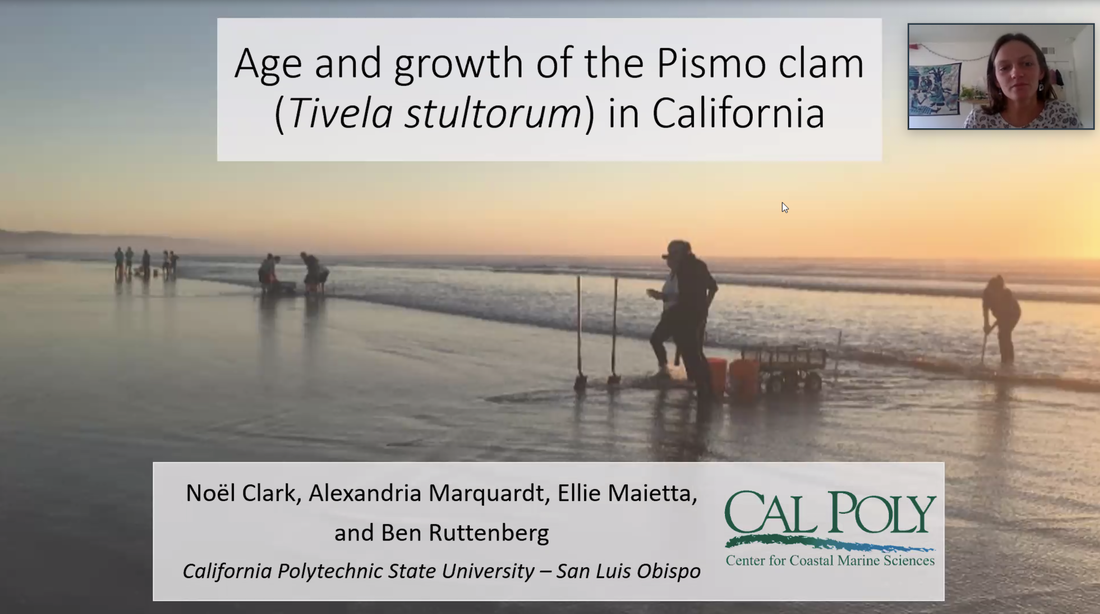 COVID-19 has created challenges for us all, but we've found creative ways as a lab community to adapt and continue pursuing research and marine science education in a sage setting.
We're presenting research at virtual conferences, adapting undergraduate summer research positions to focus on building student's skills in fisheries data analysis and scientific communication, and finding creative ways to continue engaging students in hands-on research in a socially distanced setting. Check out Dr. Ben Ruttenberg teaching 'BIO 322: Ichthyology' undergraduate students about fish dissections in a pop-up outdoor lab! We imagine this is a major improvement to the olfactory system as students learn about the anatomy and identification of these "pickled" fishes.
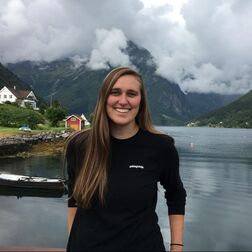 Our lab is excited to welcome Marissa Bills as a Master's student in September of 2020. Before joining the Cal Poly Marine Conservation Lab, Marissa was a Laboratory Assistant for California Sea Grant. Marissa's past research has focused on marine aquaculture and conservation. She will be continuing the lab's research on Pismo clams populations in California and is exploring the aquaculture potential of this species. Welcome, Marissa!
|
Well, we're a collection of science-minded marine misfits. But we're always up to something... Archives
April 2023
Categories |
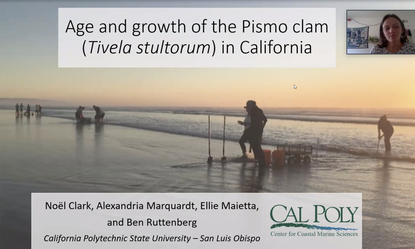
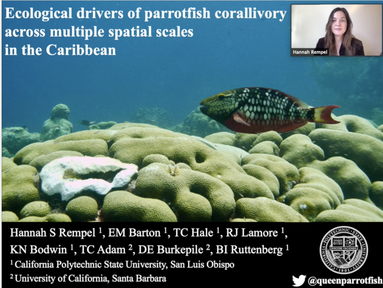
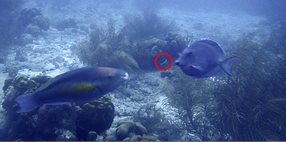
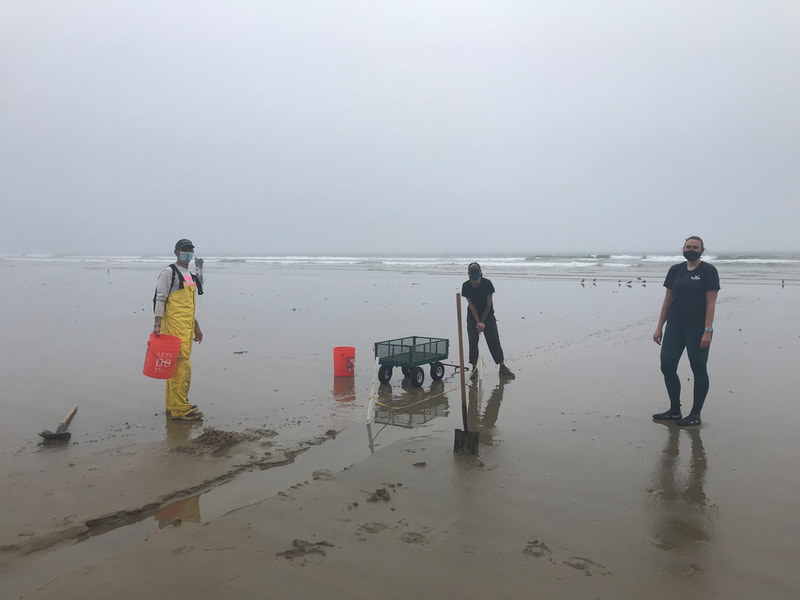
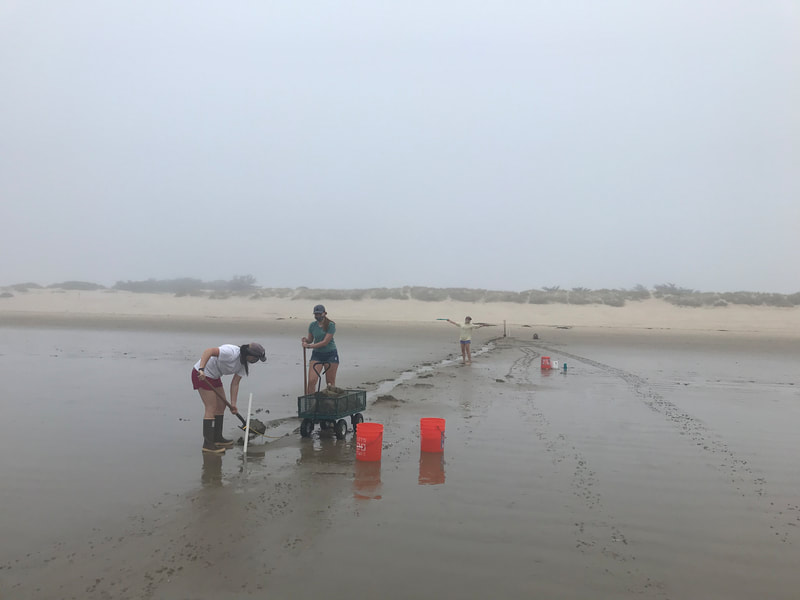
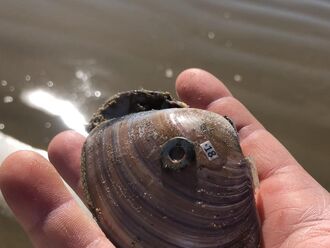
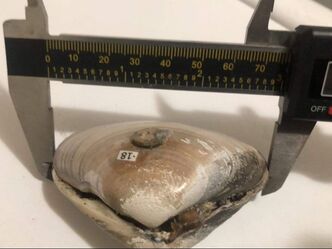
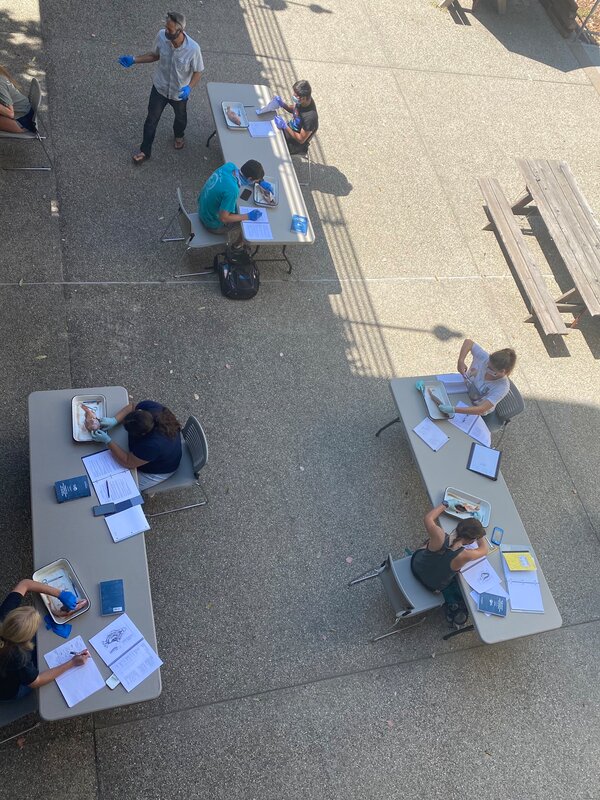
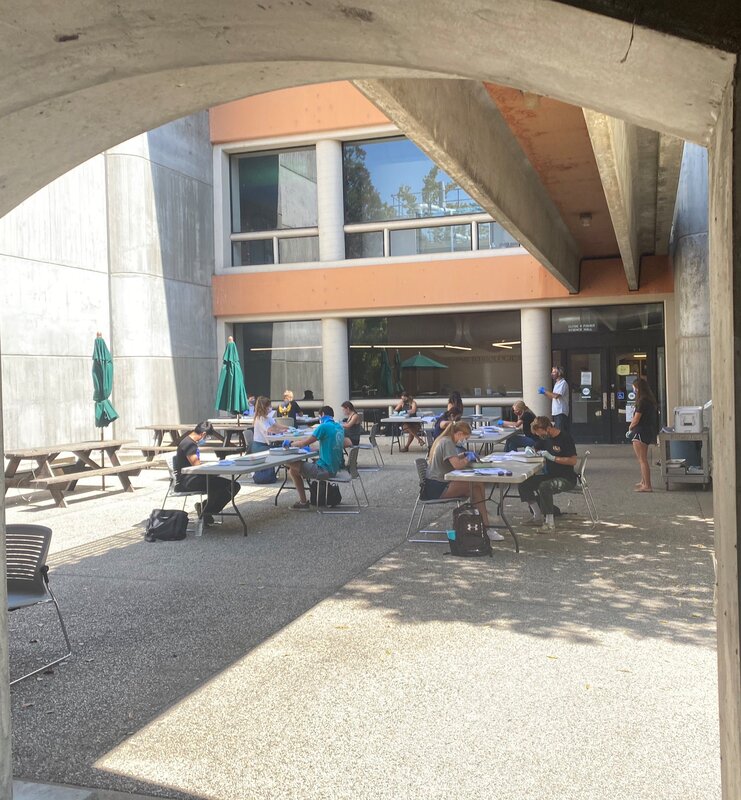
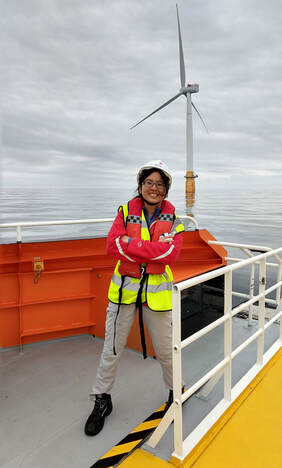
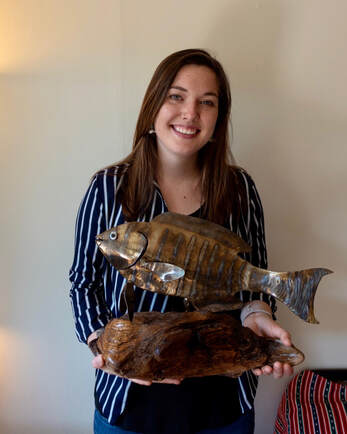
 RSS Feed
RSS Feed